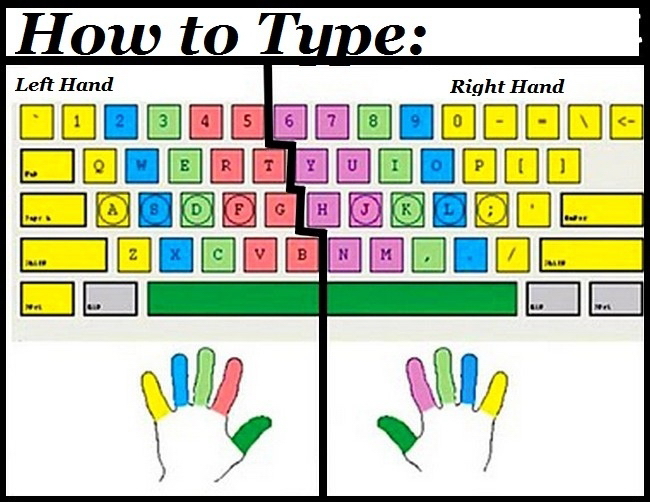
So, we can help you retrain yourself early on to avoid repeating the same mistakes and hardwiring them into muscle memory. And they are much harder to correct later. Practicing the wrong way can be detrimental, as bad habits tend to crop up when you’re under pressure. Typing without looking at the keyboard engages all four brain hemispheres. Put simply-the more you practice, the stronger your muscle memory will be. Thus, the more repetitions you’ve performed, the more your brain has to analyze. Repetition strengthens your brain’s memory of “the right way” to perform the task and consolidates the results into muscle memory. When your fingers know where to go automatically, it’s very relaxing and efficient. You’ll be able to focus on the content you’re typing rather than thinking about (or looking for) the next key to press. When you learn a new movement, your brain creates a memory of the pieces that make up that movement and stores it in your cerebellum. Scientists call this motor learning.Ĭommitting typing to muscle memory frees you from devoting mental energy to thinking about each letter as you type it. Although the cerebellum only makes up 10% of your brain volume, it contains over 50% of the brain’s neurons.

Muscle Memoryĭespite its name, muscle memory isn’t stored in your muscles, it’s stored in a part of your brain called the cerebellum. With touch typing, each finger has its “home key” on the keyboard layout where it rests when it’s inactive. With hunt and peck, you might move your index finger up four rows or horizontally across the whole keyboard just to find the letter you need, which is ultimately inefficient and tiring. Thus, if you keep your fingers on the home row and only move the necessary finger, you’re guaranteed to go faster than if you’re moving your whole hands and wrists around the keyboard. This is designed so that your fingers move as little as possible. Like with a bicycle, each key on the keyboard has a finger that is responsible for it. Sure you could learn to hop back and forth pretty quickly, but you’ll never be as fast as if you were using your left foot for the left pedal and your right foot on the right pedal. Hopping from one key to the next with the same finger is almost like trying to pedal a bike with one leg. What is touch typing?Īccording to the Oxford dictionary, touch typing is “the practice or skill of typing using all one’s fingers and without looking at the keys.” This is learned over time with correct instruction and regular practice with two hands and all ten fingers. So why bother learning to touch type with all ten fingers if you can do fine with just two? The bottom line is that even the fastest hunt and peck typists will never be able to type as quickly as someone who is making use of all ten of their digits with the touch typing technique. Generally, this involves breaking focus from a computer screen in order to look down at the keyboard to type a word. Hunt and peck typing is a technique using one finger from each hand–usually the index or middle fingers–to “hunt” for keys on the keyboard. Below, we explore the most efficient method of typing for speed and accuracy.

So why bother learning to touch type with all ten fingers if you can do fine with just two? The bottom line is that even the fastest hunt and peck typists will never be able to type as quickly as someone who is making use of all ten of their digits. Like with any skill, typing with just two fingers takes practice, and with more practice, speed and accuracy will improve. Also, my keyboard just so happens to be designed in a way that makes it incredibly uncomfortable to press the right CTRL key with my right pinky finger.There are plenty of people who can type quickly using just two fingers. When I learnt touch-typing, I figured that it wasn't really worth re-learning all these keyboard shortcuts because I thought that it would not realistically speed up my typing speed, as they are often used outside of typing text. It is long ingrained in me with copy, paste, cut, and find that a single hand will do just fine. IE, if you were to perform the keyboard shortcut CTRL+F, you would use your left index finger to press F while your right pinky finger held down the CTRL key. I believe that the orthodox method is to use the opposite hand for the CTRL/SHIFT/ALT (or whatever other keys there are like that).
#Typing fingers which keys professional#
While I'm no professional programmer, I have spent a fair amount of time programming as a hobby.

My hand is not big enough to allow any fingers to remain on the home row when my pinky reaches for the arrow keys, so I reckon it's just impractical and possibly harmful to do that. I don't think there's any other way to do this aside from literally moving your whole right hand over to where the arrow keys are and resting your fingers on them.


 0 kommentar(er)
0 kommentar(er)
